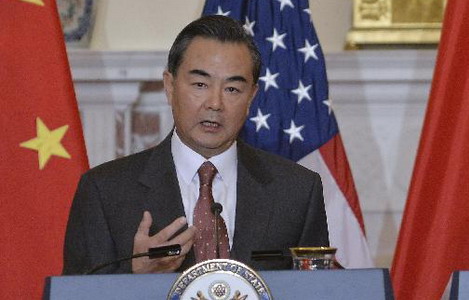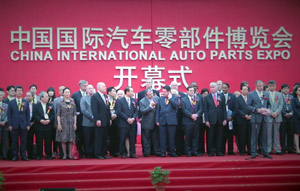A new tool to measure greenhouse gas is out
Updated: 2013-09-19 14:22
By Amy He in new York (China Daily)
|
||||||||
The pilot version of a new accounting tool to track and measure greenhouse gas (GHG) emissions in Chinese cities has been launched in Beijing.
Called Greenhouse Gas Accounting Tool for Chinese Cities, it is the first of its kind customized for Chinese cities. It was developed by the World Resources Institute (WRI), the Institute for Urban and Environmental Studies of the Chinese Academy of Social Sciences, WWF China, and the Institute for Sustainable Communities.
The tool has been in the making for about one year, according to Xiaomei Tan, senior associate at WRI.
"Low-carbon development has become the core theme of China's urbanization," according to a press release. Researchers hope that city planners can use the tool to figure out the amount of GHG emissions from major sectors, including the industrial, building, transportation, and waste sectors, "which are the key emission sources in most Chinese cities," according to a press release.
City planners can input data they have collected on the sectors they are trying to figure out emission levels for—for example, how big a plot of agricultural land is, the amount of output generated by that land— and the tool will generate an emission amount, Tan said in an interview.
"Our hope is that city policy makers who work [in China's dierent sectors] who are hoping to reduce emissions and hoping to reduce energy consumption will use our tool," Tan said. "Then, at least they understand how their cities are doing in this specic [sector], and they can take measures."
Although the tool doesn't provide guidance on how city planners can use energy more eciently, it gives them a "benchmarking method" so that they know how much GHG is being emitted, Tan said.
In a blog post for WRI, Tan wrote that in China urban residents' per capita energy consumption "has consistently outpaced the national average and that of rural residents in the past decade."
As China continues to become a "factory of the world," industrialization and urbanization will drive energy consumption, making the city "productive but also energy- and resource-intensive," Tan wrote.
She said the problems urbanization brings — which include increased use of household appliances and private vehicles and large-scale infrastructure building — are not unique to China, but Tan said that she doesn't believe the Chinese government views GHG emissions as a top environmental priority despite being that for many developed countries.
Despite GHG emissions not yet being a primary concern for the government, Tan said that the accounting tool is a good first step toward more awareness.
(China Daily USA 09/19/2013 page2)

 iPhone 5s, iPhone 5c hit Chinese market
iPhone 5s, iPhone 5c hit Chinese market
 China to play 'constructive' role on Syria: FM
China to play 'constructive' role on Syria: FM
 iPhone 5s, iPhone 5c hit Chinese market
iPhone 5s, iPhone 5c hit Chinese market
 Faces of Tibet
Faces of Tibet
 Full moon across China
Full moon across China
 Wearable technology, the new game-changer
Wearable technology, the new game-changer
 Tapestry of Chinese culture and a Harvard teen's feeling
Tapestry of Chinese culture and a Harvard teen's feeling
 A simple but pure festival tradition
A simple but pure festival tradition
Most Viewed
Editor's Picks

|

|

|

|

|

|
Today's Top News
UN lauds China on food waste efforts
Chinese firms face trust deficit
13 injured in Chicago park shooting
Wang and Kerry meet in DC
Belgian zoo owner set to host Chinese pandas
Trending news across China
Fast-track process sees more NGOs
Beijing sends out positive smoke signals
US Weekly

|

|





